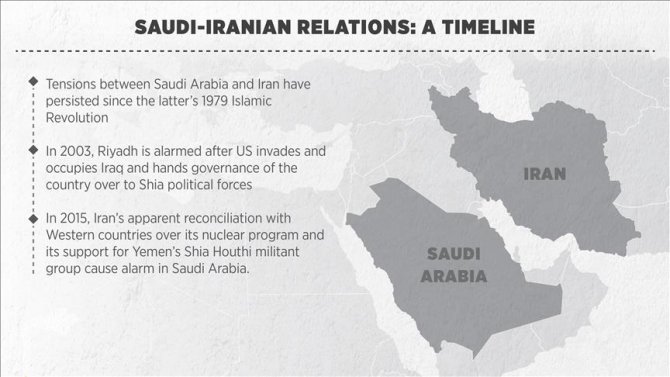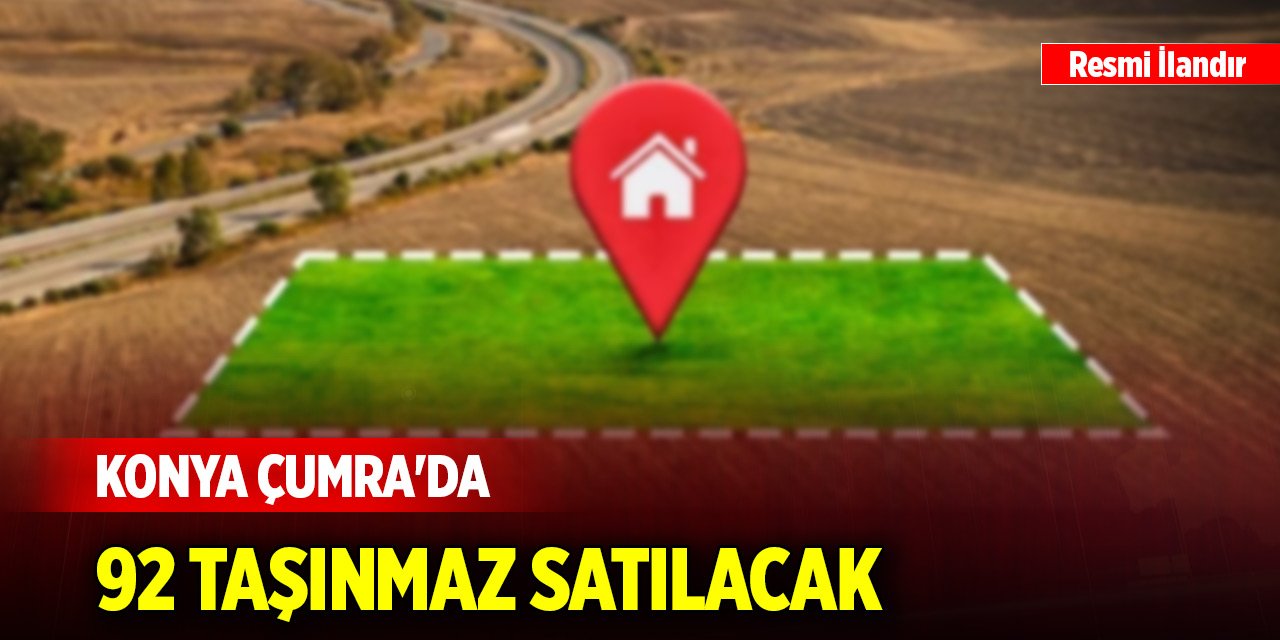Saudi-Iranian relations: A timeline
Ever since Iran's 1979 Islamic Revolution, Tehran and Riyadh have had a stormy relationship

Following the execution by Saudi Arabia of a prominent Shia Muslim cleric last week and subsequent attacks on Saudi diplomatic missions in Iran, the traditional rivalry between the two regional powers has erupted into a crisis with international ramifications.
Saudi-Iran relations have had their ups and downs since Iran’s 1979 Islamic Revolution, when Tehran emerged as a regional rival to Saudi Arabia.
The following timeline covers watershed events in the two countries’ bilateral relations:
1980-1988: Saudi Arabia supports Iraq throughout the latter’s eight-year-long conflict with post-revolutionary Iran.
1987: Clashes erupt between Iranian-led demonstrators and Saudi security forces in Mecca, claiming the lives of some 400 pilgrims, two thirds of whom are Iranian nationals.
1988: After Saudi Arabia institutes a ban on Hajj pilgrimage activities, Iranian protestors ransack the Saudi embassy in Tehran, killing a Saudi diplomat.
Shortly afterward, Riyadh severs its relations with Iran.
1991: Relations improve when both Iran and Saudi Arabia condemn the invasion of Kuwait by Saddam Hussein’s Iraq.
2003: Riyadh is alarmed after the U.S. invades and occupies Iraq and eventually hands governance of the country over to Shia political forces that enjoy Iranian support.
2004: Jordan’s King Abdullah II warns of the emergence of a "Shia Crescent" in the region comprised of Iran, Shia-led Iraq, Syria and Lebanon’s Iranian-backed Hezbollah group.
2006: Hezbollah wins a military conflict with Israel, further prompting fears of Shia geo-political ascendency in the region.
2007: Iran’s increasing influence in Iraq -- along with increasingly vocal Shia minorities in the Arabian Gulf -- further fuel the anxieties of Sunni-led states of the region.
2011: Iranian-backed Shia protestors, inspired by the "Arab Spring" elsewhere in the region, stage anti-government demonstrations in Bahrain, prompting Saudi Arabia to send troops to the island nation to crush the popular uprising.
The same year, two Iranian nationals are accused of attempting to assassinate Adel Al-Jubeir, Saudi Arabia’s current foreign minister, who was serving at the time as Saudi ambassador to the U.S.
2011-2015: Iran and Hezbollah send fighters to support the Assad regime in Syria, while Saudi Arabia supports the country’s anti-regime opposition.
2012: Shia Muslim cleric Nimr Baqir al-Nimr is arrested in Saudi Arabia after leading anti-government protests in the kingdom’s predominantly-Shia Qatif province.
September, 2014: The Iranian-backed Shia Houthi militant group captures large swathes of Yemen, including capital Sanaa, prompting Yemen’s Saudi-backed president to flee to Riyadh.
March, 2015: A Saudi-led coalition begins an extensive military campaign -- including both airstrikes and the deployment of ground forces -- aimed at reversing Houthi gains in Yemen.
July, 2015: Iran and the P5+1 group of nations sign a landmark deal on Iran’s nuclear energy program.
The apparent thaw in relations between Iran and the West disconcerts Saudi Arabia and other Arab Gulf States, which fear the deal will further enhance Iran’s regional influence.
September, 2015: A deadly stampede in Mecca claims the lives of hundreds of Hajj pilgrims, prompting Tehran to accuse the Saudi authorities of negligence and downplaying the death toll.
October, 2015: Representatives of both countries meet in Vienna to discuss the conflict in Syria, where Iran and Saudi Arabia support opposing sides of the conflict.
Jan. 2, 2016: Saudi Arabia executes prominent Shia cleric Nimr Baqir al-Nimr, along with 46 others convicted of "terrorism".
Tehran warns that Saudi Arabia would pay a "steep price" for the cleric’s death, while Iranian protesters attack Saudi diplomatic missions in Tehran and the Iranian city of Mashhad.
Jan. 3, 2016: Riyadh severs diplomatic ties with Iran and gives Iranian diplomats 48 hours to leave the kingdom.
On the same day, unidentified gunmen open fire on a police patrol in al-Nimr’s hometown in Saudi Arabia’s Qatif province, killing one person.
Jan. 4, 2016: Following Riyadh’s lead, Bahrain and Sudan cut diplomatic relations with the Islamic republic, while the United Arab Emirates scales down its diplomatic representation in Tehran.
Meanwhile, a number of countries -- including the U.S., the U.K., China and Turkey -- urge both Saudi Arabia and Iran to show restraint amid the ongoing row.
Jan. 5, 2016: Kuwait, too, recalls its ambassador to Iran.



